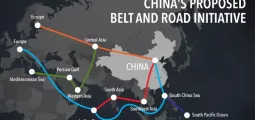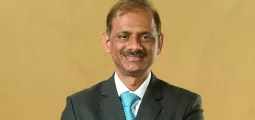Perry Chen: Unleashing the Power of Collective Funding, Getting Bright Ideas to Fruition

Perry Chen
In the spring of 1885, publisher Joseph Pulitzer launched a fundraising campaign in his newspaper New York World to raise the last $100,000 needed to build a pedestal for the Statue of Liberty. The statue – a gift from the people of France – was in storage, disassembled, and had no place to go.
Within six months, the paper had raised over $102,000 ($2.3m today’s money). Most donations amounted to less than a single dollar. Thus, the Statue of Liberty was erected – or at least in part – through crowd-funding. Today, Joseph Pulitzer might just have used Kickstarter.
Perry Chen is CEO and co-founder of Kickstarter – a New York company which offers artists, creators and others an online crowd-funding platform to bring their projects to life. Since its launch in 2009, Kickstarter has helped raise over $870m for some 50,000 projects. More than five million people contributed with donations.
This success has brought Mr Chen wide acclaim. Time Magazine recently included him in its list of the world’s hundred most influential people.
“There are billions of projects in people’s heads right now. And however they happen, I just can’t wait to see them.”
Mr Chen got his idea in 2001 while living in New Orleans. He had wanted to stage a music event during the city’s jazz festival. He found artists willing to perform and even a perfect venue. In the end though, the event never took place due to a dearth of funds.
Analysing the debacle, Mr Chen hit upon an idea: What if people could pledge to buy tickets? Once enough interest had been sparked, the pledges could be monetized, enabling the organisers to proceed. Should things turn out differently, the proposed event would just not take place and nobody would have lost any money.
This idea was developed into the business model of Kickstarter which Mr Chen co-founded with Charles Adler and Yancey Strickler. Kickstarter projects are not investments; funders do not get a return on their money. Projects must attain a set volume of pledges within a previously determined timespan. Those who pledge funds are only charged once all conditions have been met. Kickstarter projects range from debut albums and comic books to Academy Award winning movies and 3D printers.
Kickstarter has the feel of the Internet making good on one of its promises: Bringing people together to make great things happen. Whereas Internet piracy was perceived to herald the demise of the creative arts, it in fact contributed to a change in the balance of power between producers and consumers. It seems news of the arts’ death had been greatly exaggerated.
Through social media, artists now have more power than ever before to get their ideas to fruition. The industry’s gatekeepers have been shoved aside. Though perhaps not the embodiment of evil, these gatekeepers dispose of finite resources. This imposes caution – a disposition often at odds with creativity.
Kickstarter and other copycat crowd-funding sites have now changed the equation yet again: Audiences are no longer mere consumers and instead may become part of any given creative process by backing it financially. Kickstarter’s users are decidedly not in it for the money, nor particularly concerned with sales’ potential, profits and whatnot: They just fancy an artist’s creative idea and may even have fallen in love with it to the point of wanting to see that idea take shape and become a tangible reality.
You may have an interest in also reading…
World Bank MD and CFO Anshula Kant: Financing Where It Matters Most
Financing Where It Matters Most — People, The Planet, and the Role of Investors Amid overlapping crisis facing the world,
Mark Carney: An Admirable Mind-Set at the Bank of England
Early February, Canadian banker Mark Carney spoke before the House of Commons Treasury Committee about his new job. The hearing
World Bank MENA Chief Economist: Towards a New Social Contract in the Middle East and North Africa
By Shanta Devarajan A snapshot of the Middle East and North Africa (MENA) Region today reveals a diverse and discouraging


























































































